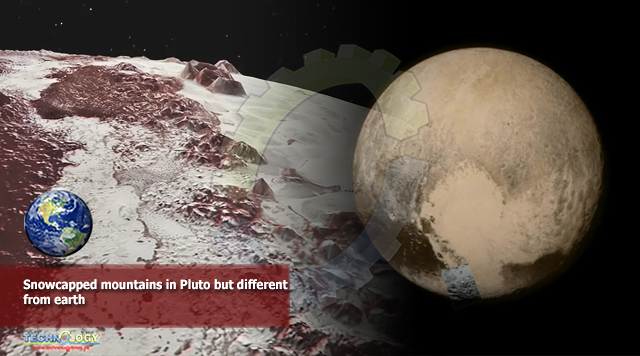Earlier in 2015, the New Horizons space probe discovered spectacular snowcapped mountains on Pluto, which seemed strikingly similar to mountains on Earth.

Conducting an exploration of a 2015 space probe that discovered spectacular snowcapped mountains on Pluto, an international team led by CNRS scientists have found that though snowcaps on Pluto’s mountains differed the snowcaps on Earth’s mountains.
They first determined that the ‘snow’ on Pluto’s mountains actually consists of frozen methane, with traces of the gas being present in Pluto’s atmosphere, just like water vapour on Earth.
Then, to understand how the same landscape could be produced in such different conditions, they used a climate model for the dwarf planet, which revealed that due to its particular dynamics, Pluto’s atmosphere is rich in gaseous methane at altitudes.
As a result, it is only at the peaks of mountains high enough to reach this enriched zone that the air contains enough methane for it to condense. At lower altitudes, the air is too low in methane for ice to form.
This research, published in Nature Communications, could also explain why the thick glaciers consisting of methane observed elsewhere on Pluto bristle with spectacular craggy ridges, unlike Earth’s flat glaciers, which consist of water.
Earlier in 2015, the New Horizons space probe discovered spectacular snowcapped mountains on Pluto, which seemed strikingly similar to mountains on Earth. Such a landscape had never before been observed elsewhere in the solar system.
However, as atmospheric temperatures on our planet decrease at altitude, on Pluto they heat up at altitude as a result of solar radiation.
Originally published at The free press journal